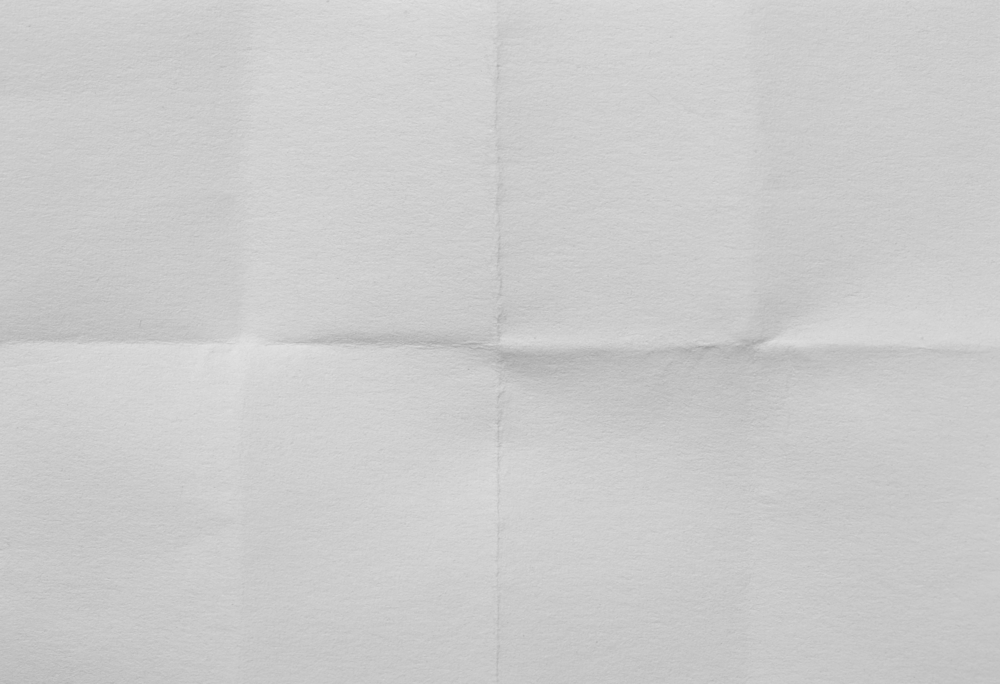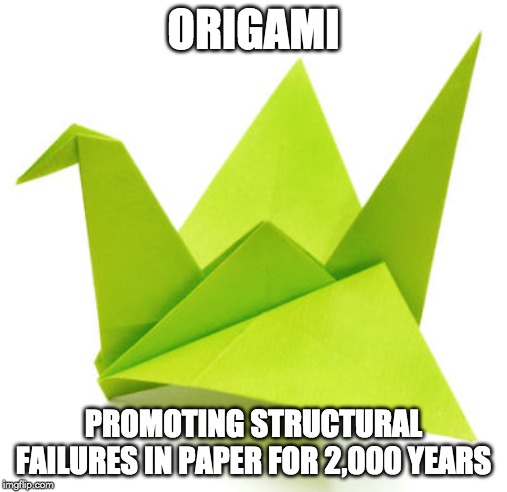Table of Contents (click to expand)
A fold or bend in a paper becomes permanent because you are damaging the fundamental structure of the fibers that compose the paper, pushing them beyond their elastic limit into a state of permanent physical change.
If you have ever tried the legendary 7-Fold Challenge with a piece of A4 paper, then you know that it is physically impossible for a person to fold a piece of paper seven times with their bare hands. Considering how many millions of people have tried and failed this enigmatic challenge, that’s a lot of piece of paper with dozens of folds all over them. Unfortunately, no matter how heavy a weight you put on them, or how long you wait, those pieces of paper will remain folded forever.

Why is folding a piece of paper such a permanent act? Considering how easily we can manipulate paper, what prevents it from regaining its initial form?
The Science Of Paper
The most rudimentary form of paper was papyrus, made about 5,000 years ago by the Egyptians from plants that grew along the Nile River. Although the technology involved in making paper has improved significantly over the millennia, the fundamental concept remains much the same—compressing and drying plant fibers into a uniform surface.

Essentially, paper is made by beating or smashing plant material until the fibers are released. This plant material is usually evergreen trees or other fast-growing conifers, although plants like bamboo, jute and cotton can also be used for this purpose. This plant material is then mixed with water to form a suspension called “stock” (or pulp). This pulp is then spread out over a wire mesh, which encourages the fibers to bind together into a uniform mat. This mat is then pressed or squeezed to eliminate the excess water and allowed to dry.
This is the simplest explanation of how paper is made, although the mass production of paper utilizes large machines and industrial processes. The preparation of the pulp can be done through mechanical or chemical methods, the latter being more common in modern times. Once the pulp is produced, dyes and other additives can be mixed with the pulpy fibers to create different colors or textures in the final paper product. Large roller machines with conveyor belts pull this substance under extreme pressure into rolls or sheets that can be used for countless applications, from phone books and wallpaper to paper towels and diapers.
Also Read: How Is Paper Made?
Elastic And Plastic
Now that we understand how paper is made, we have a better perspective on what happens when a piece of paper is folded or bent. To explain this in simple terms, consider paper from a structural perspective, in the same way you would assess the integrity of metal or any other material. Now, remember that materials have an elastic limit and a plastic region. An elastic limit is the point up to which a material can be bent and still return to its original position, without any permanent structural alteration. If you exceed this limit, you take a material into its plastic region, so any physical alterations to the material become permanent, and cannot maintain its original integrity.
Every material will have a different elastic limit (yield), plastic region and ultimate strength. In the case of paper, imagine holding the paper like a “hot dog”, but not actually folding or creasing the paper. The plant fibers in the paper, at this point, have not exceeded their elastic limit, so you can let go of the paper and it will return to its flat, uncreased state. However, if you roll that same sheet of paper into a loose tube and wrap a rubber band around it for a few hours, some of the plant fibers will be pushed past the elastic limit. When you remove the rubber band, it will no longer lay flat, as minor physical deformities have occurred.

When you fold a piece of paper, the plant fibers along the crease will be pushed permanently into the plastic region of its integrity, and will reach a fracture point at the actual angle of the fold. The fold becomes a structural failure, and cannot be reversed, as the fibers cannot regain their original integrity. As a result of this structural failure, the paper will remember this fold forever, no matter how hard you try to flatten it back out.
Also Read: What Is Yield Strength?
A Final Word
Paper is one of the most common and useful materials in the world, but in comparison to metal, plastic or other composite substances, it is very fragile and has a low threshold for structural failure. In other words, if you’re going to make a fold in a piece of paper, make sure you put it in the right place, because you’ll never be able to take it back!
How well do you understand the article above!

References (click to expand)
- Eriksson, K.-E. L. (1990). Biotechnology in the pulp and paper industry. Wood Science and Technology. Springer Science and Business Media LLC.
- (2013) Fold Mechanics of Natural and Synthetic Origami Papers. The American Society of Mechanical Engineers
- Browning, B. L. (1970, January). The Nature of Paper. The Library Quarterly. University of Chicago Press.
